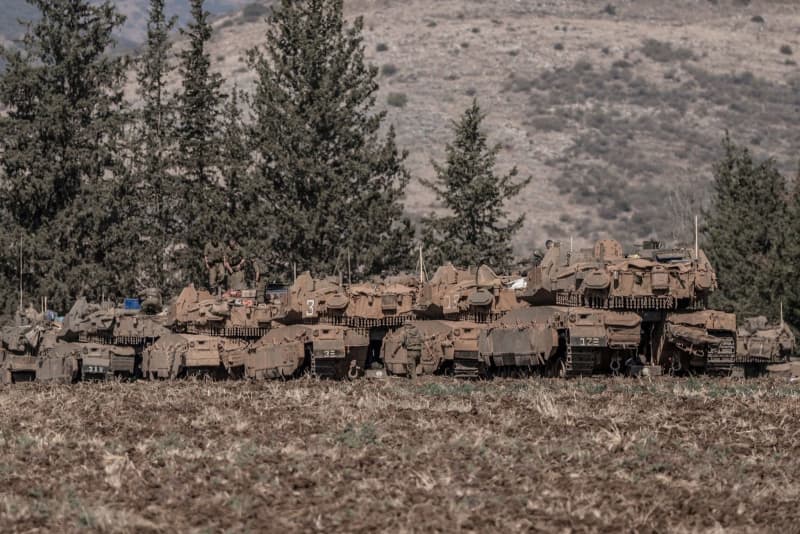The Israeli army is undertaking a significant escalation in its military operations in southern Lebanon, engaging in intensified ground offensives against the Hezbollah militia. This strategic move involves the deployment of the 146th Reserve Division, a large military unit comprising thousands of soldiers, which has been active in the western sector of southern Lebanon since Monday. The deployment marks a critical phase in the ongoing conflict, as it contributes to a broader military buildup that already includes three other Israeli divisions positioned in the central and eastern sections of the front. This expansion of military presence is likely a response to the escalating hostilities in the region, which have been marked by frequent exchanges of fire between Israeli forces and Hezbollah.
Prior to this surge in military activity, the western part of the border between Israel and Lebanon had been designated as a closed military zone, underscoring the seriousness of the security concerns along this volatile frontier. The shift to an active combat posture suggests a reassessment by Israeli military leaders regarding the threats posed by Hezbollah, renowned as an Iranian-backed group that has been launching attacks against Israel for over a year. Hezbollah claims to be acting in concert with Hamas, the Islamist group in control of the Gaza Strip, which has further complicated the regional landscape and exacerbated tensions. The situation is dire, with each side suffering casualties as they engage in periodic clashes, creating a rapidly deteriorating security environment.
The essential objective of Israel’s intensified military efforts is twofold: to repel Hezbollah forces from key positions along the border and to facilitate the safe return of around 60,000 Israelis who have been evacuated from their homes due to the threat of conflict. This sizeable civilian population has been displaced amidst rising fears of attacks, and their return hinges on establishing a more stable security situation that can only be achieved through decisive military action against Hezbollah. With civilian safety paramount, the Israeli government aims to restore normalcy for its citizens while addressing the immediate security threats presented by the militia operating just beyond its border.
While the situation remains fluid, it is essential to understand the context in which these military operations are taking place. The Israeli-Hezbollah conflict is not a new phenomenon; it has deep historical roots influenced by a variety of factors, including territorial disputes, regional politics, and longstanding animosities. The current dynamics are further complicated by Iran’s involvement as a supporter of Hezbollah, complicating the regional balance of power. The interplay of these factors creates a situation where military engagements can quickly escalate, leading to potential wider conflicts if not carefully managed.
Reports from the front indicate that both sides are employing significant military resources, raising concerns about the potential for increased casualties and destruction as the fighting escalates. As the Israeli army engages in direct confrontations with Hezbollah, the humanitarian implications become more pronounced. Civilians on both sides face the looming specter of war, and the impacts may extend beyond immediate military targets, as urban infrastructure and civilian livelihoods can be caught in the crossfire. This highlights the urgent need for diplomatic efforts that could potentially de-escalate tensions and lead to a more stable and peaceful coexistence.
In conclusion, the intensification of Israeli military operations in southern Lebanon represents a critical juncture in an ongoing conflict marked by complexity and volatility. With the deployment of additional divisions and a pronounced focus on neutralizing Hezbollah’s influence, the Israeli government aims to secure its borders and restore safety for its citizens. However, the risks inherent in military escalation may yield unintended consequences, underscoring the necessity for ongoing dialogue and negotiation to address the underlying issues that fuel this enduring conflict. The situation remains precarious, with the potential for broader implications in the region if hostilities continue unchecked.

